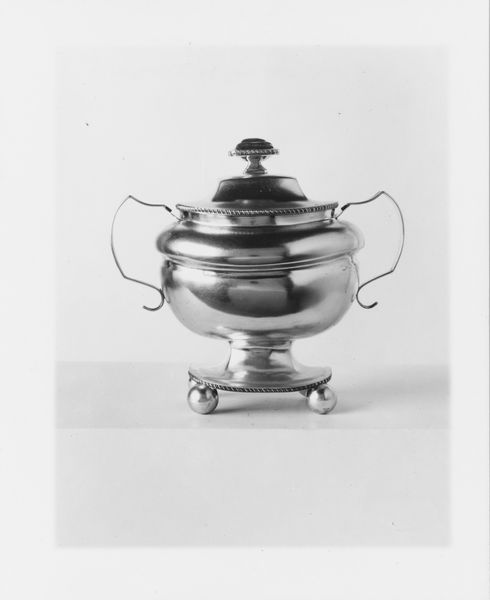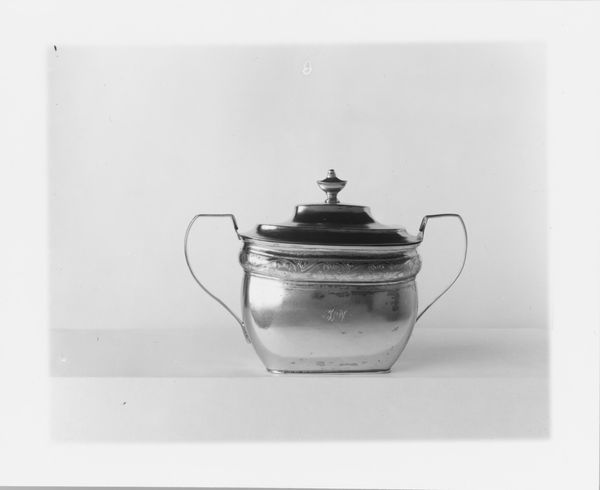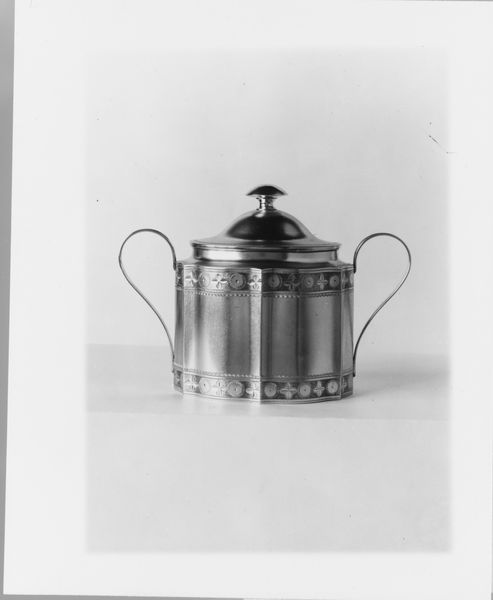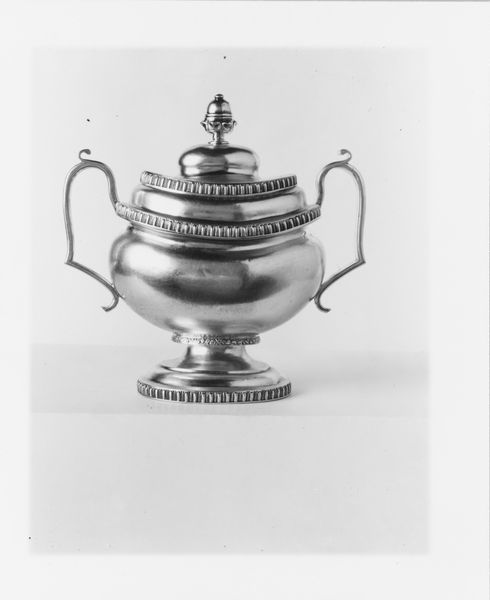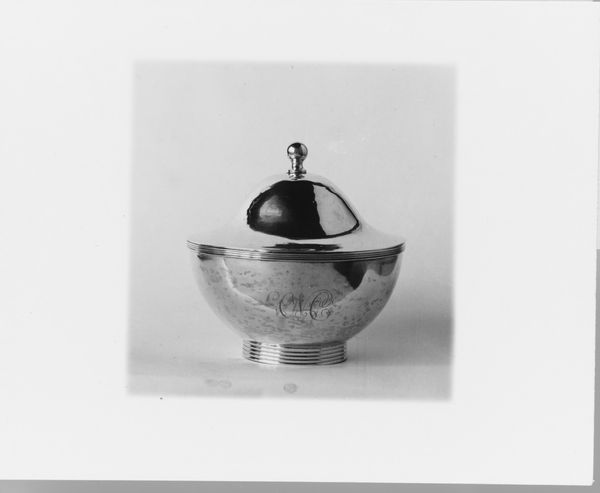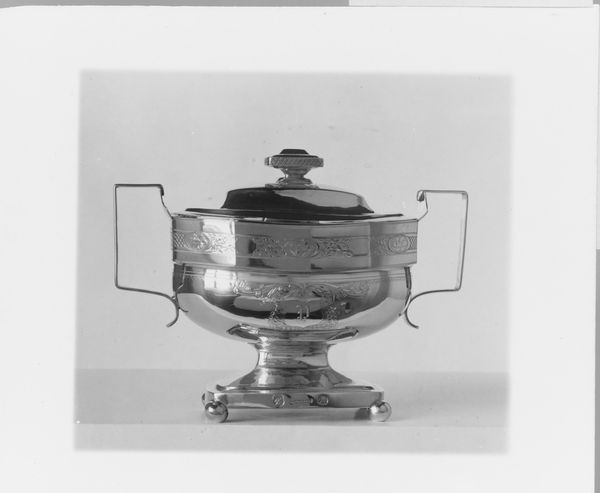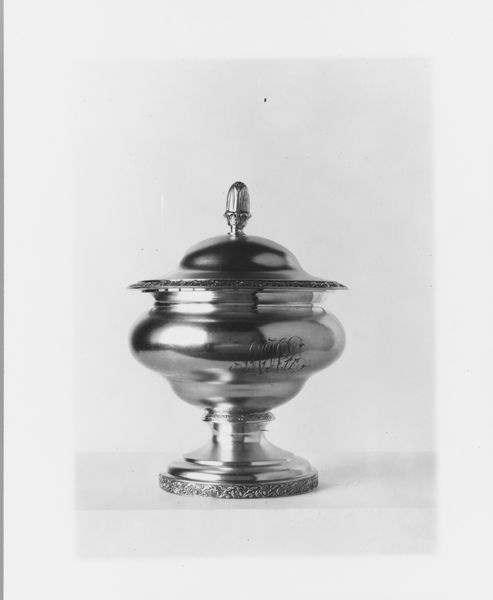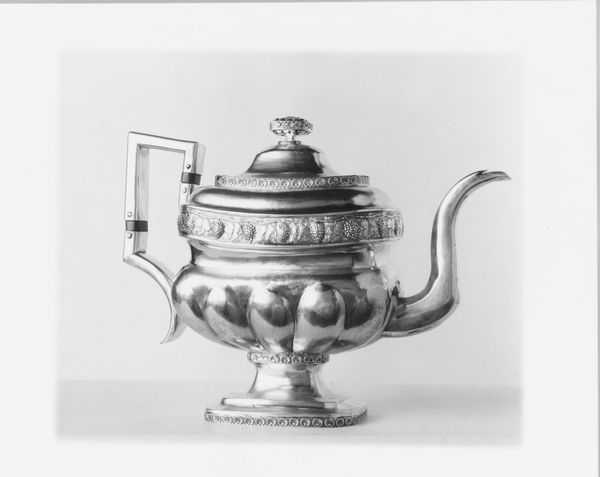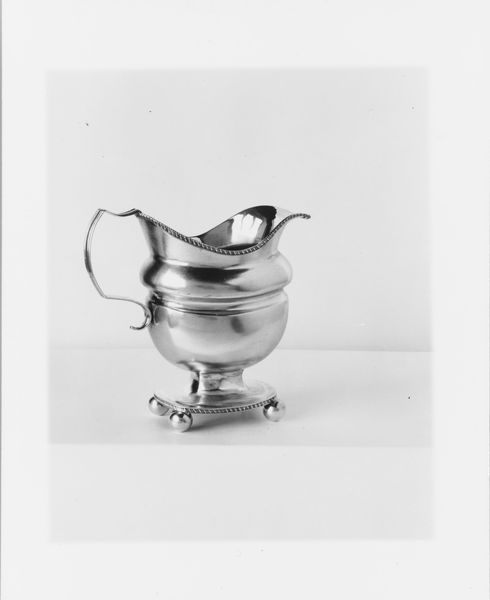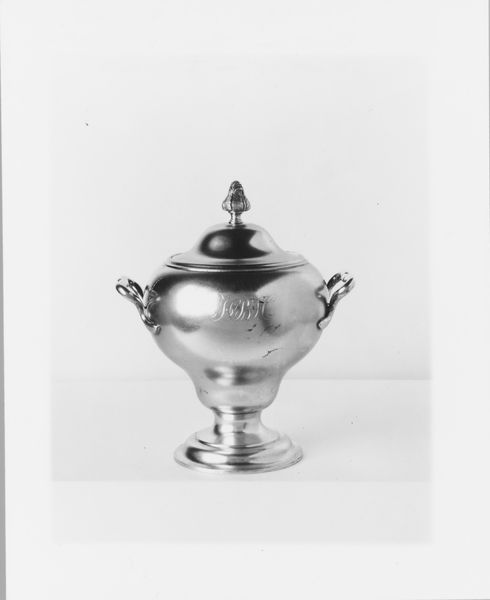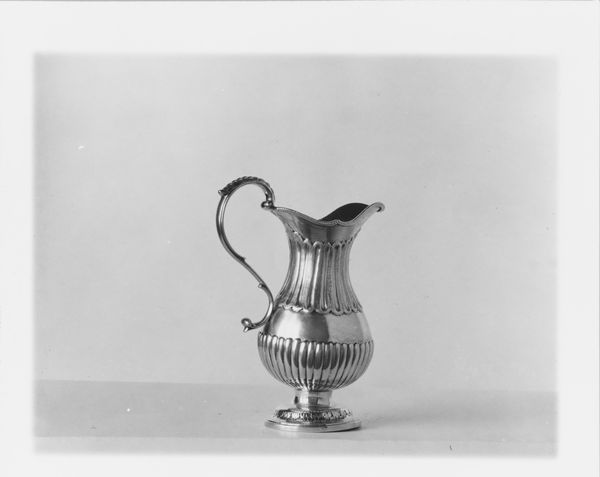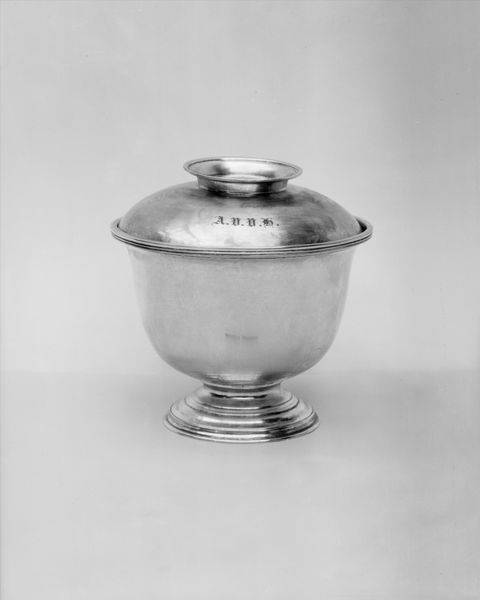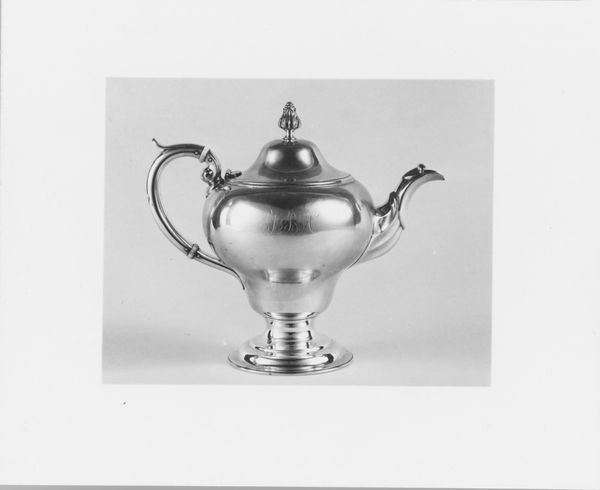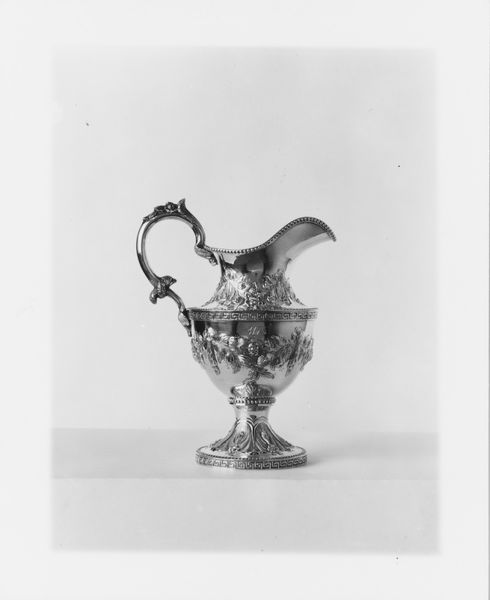
Dimensions: Overall: 7 5/8 x 7 1/4 x 4 1/16 in. (19.4 x 18.4 x 10.3 cm); 15 oz. 10 dwt. (482.1 g) Cover: 2 3/8 x 5 1/2 x 4 in. (6 x 14 x 10.2 cm); 4 oz. (124.6 g) Body: 11 oz. 10 dwt. (357.5 g) Foot: 4 7/16 x 3 5/16 in. (11.3 x 8.4 cm)
Copyright: Public Domain
This silver sugar bowl was made by John McMullin, an American silversmith, around the turn of the 19th century. Its elegant form and gleaming surface speak to the prosperity of the early American republic, but also to the social dynamics of the era. Silver was a favored material for luxury goods, prized for its malleability and ability to be intricately worked. McMullin likely used techniques like hammering, casting, and chasing to create the bowl's fluted body, beaded rim, and refined details. These skills represented a significant investment in training and tools. The overall design, with its classical allusions, reflects the era's aspirations to sophistication and cultural refinement. However, it's important to remember that sugar itself was a product of exploited labor, harvested by enslaved people in the West Indies. This bowl, therefore, embodies a complex intersection of craft, commerce, and social inequality. Considering the bowl's materiality and context helps us see beyond its beauty and appreciate its full historical meaning, challenging any simple distinction between fine art and craft.
Comments
No comments
Be the first to comment and join the conversation on the ultimate creative platform.
